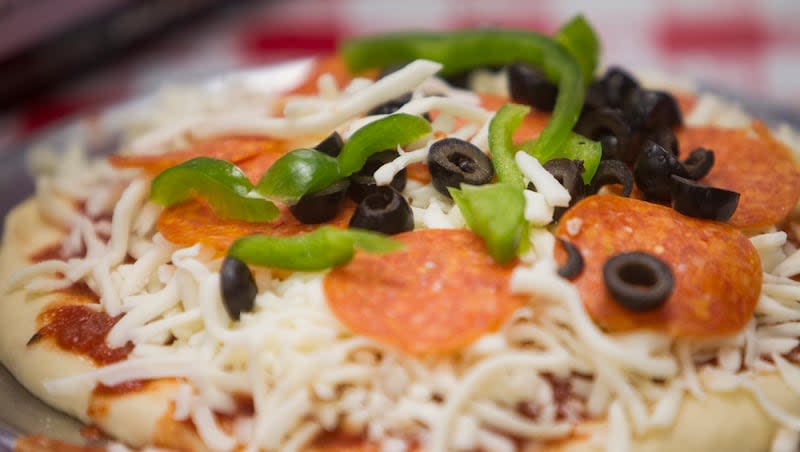Yes, pizza can be healthy. Here’s what to know

Whether for birthday parties or late-night hangouts, pizza is an easy food to serve and share.
But it’s not often seen as healthy, and it’s more likely to be compared to a burger and fries than a salad.
However, health experts say it’s possible to make even pizza nutritious.
Amy Kimberlain, a registered dietitian, told Everyday Health that pizza — comprised of carbohydrates, protein and fat — has “all the components of what a meal would typically contain” and can provide energy and flavor.
Here are ways to make your next pizza healthier.
Make it at home
“By making (pizza) at home you have the control over how, ultimately, it’s being made,” Kimberlain said to Everyday Health.
Dana Angelo White, a registered dietitian nutritionist, echoed this statement on Food Network: “Homemade pizza allows you to control the quality, but more importantly, the quantity of the ingredients. Pizza is also the ultimate opportunity to reduce food waste — dig through the fridge on a Friday, and your fixings choose themselves.”
Mind the crust
Avoid choosing a high-carb, high-sodium crust, and instead opt for a low-carb or fiber-heavy option.
Cleveland Clinic listed some healthy options to choose from:
Cauliflower crust.
Spelt flour crust.
Whole-wheat pita.
Similarly, Verywell Fit recommended to choose either a whole-wheat or sourdough crust. Whole-wheat crust can provide extra fiber and help keep you full for longer, while sourdough crust can promote healthy gut bacteria due to its fermentation process.
Choose the right sauce
Cleveland Clinic advised going with olive oil, pesto, sofrito sauce or tomato sauce, and avoiding barbecue sauce as it can have added sugar and sodium.
“Traditional red sauce will provide vitamins A and C along with the antioxidant lycopene,” Kimberlain told Everyday Health. Lycopene has been associated with reducing the risk of stroke and even certain cancers.
Pesto can also be beneficial. As it’s made with pine nuts, it could help to lower your levels of bad cholesterol, or LDL cholesterol, per Everyday Health.
Cheese
Kimberlain said to Everyday Health that cheese “will provide protein and calcium,” but urged pizza lovers to be cautious about the amount used “as it does have saturated fat, too.”
Aside from mozzarella — which can be low in fat and calories — Medical News Today described feta and ricotta as healthy cheese options.
Feta: In addition to being a low-calorie option, feta holds a significant amount of phosphorous, which, like calcium, is important for bone health.
Ricotta: As it’s made with whey protein, ricotta can decrease LDL cholesterol.
Embrace colorful toppings
Vegetables can boost the nutrients on a pizza. Leafy greens like spinach or kale, for example, help to get you vitamins A, C and K, as well as potassium and fiber, according to Cleveland Clinic.
“Pile the vegetable toppings high, or serve along with a salad, and your pizza meal is incredibly balanced,” Angelo White said to Food Network.
As for meats, Verywell Fit suggested to go for leaner meat options such as chicken, shrimp or even tofu — especially if you’re being careful about your cholesterol levels.
As Julia Zumpano, a preventive cardiology dietitian, told Cleveland Clinic, “The No. 1 best way to boost the nutritional value of your pizza is by cutting out processed meats, which are high in calories and unhealthy fats.”

